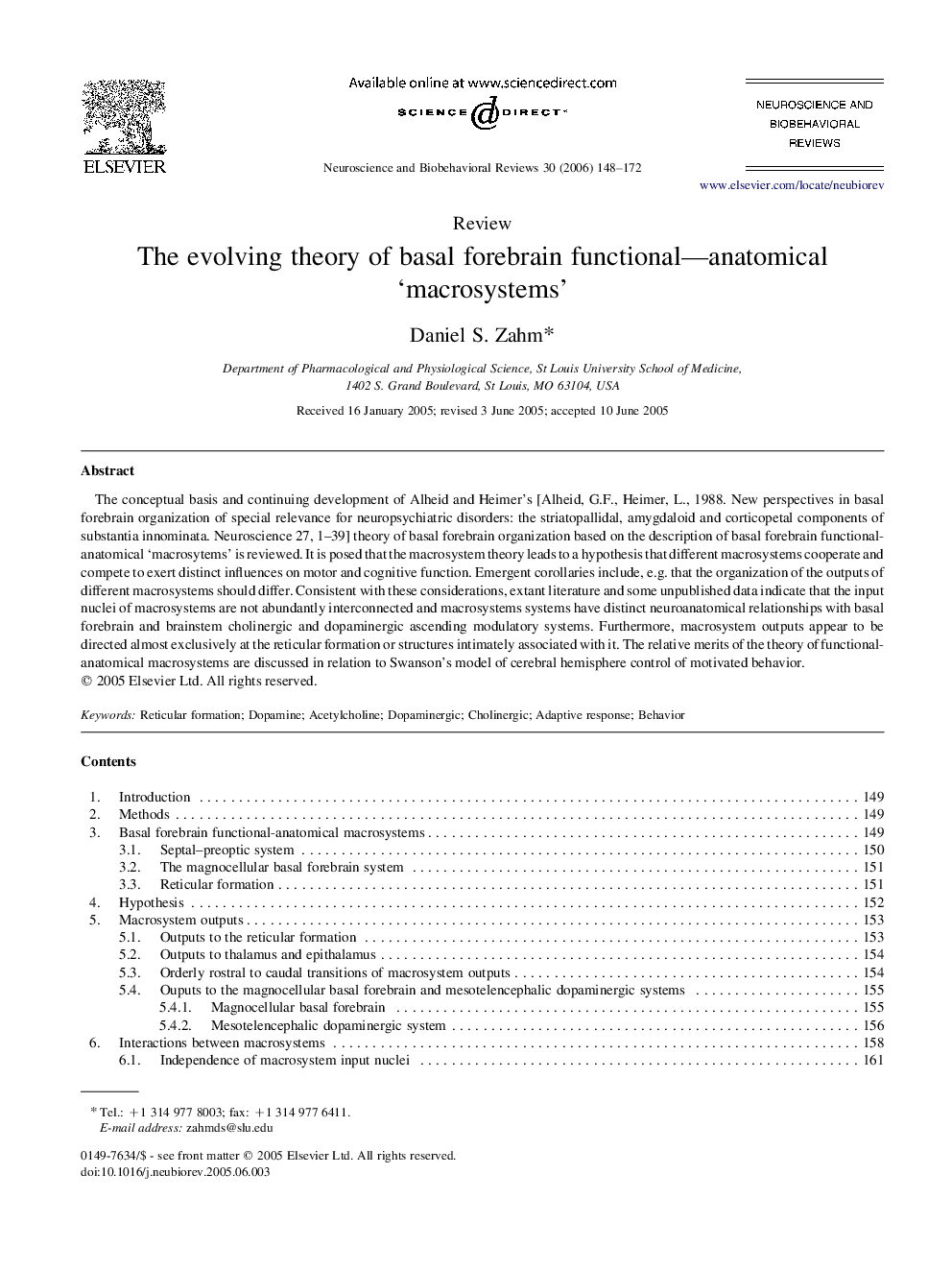| Article ID | Journal | Published Year | Pages | File Type |
|---|---|---|---|---|
| 937969 | Neuroscience & Biobehavioral Reviews | 2006 | 25 Pages |
The conceptual basis and continuing development of Alheid and Heimer's [Alheid, G.F., Heimer, L., 1988. New perspectives in basal forebrain organization of special relevance for neuropsychiatric disorders: the striatopallidal, amygdaloid and corticopetal components of substantia innominata. Neuroscience 27, 1–39] theory of basal forebrain organization based on the description of basal forebrain functional-anatomical ‘macrosytems’ is reviewed. It is posed that the macrosystem theory leads to a hypothesis that different macrosystems cooperate and compete to exert distinct influences on motor and cognitive function. Emergent corollaries include, e.g. that the organization of the outputs of different macrosystems should differ. Consistent with these considerations, extant literature and some unpublished data indicate that the input nuclei of macrosystems are not abundantly interconnected and macrosystems systems have distinct neuroanatomical relationships with basal forebrain and brainstem cholinergic and dopaminergic ascending modulatory systems. Furthermore, macrosystem outputs appear to be directed almost exclusively at the reticular formation or structures intimately associated with it. The relative merits of the theory of functional-anatomical macrosystems are discussed in relation to Swanson's model of cerebral hemisphere control of motivated behavior.
